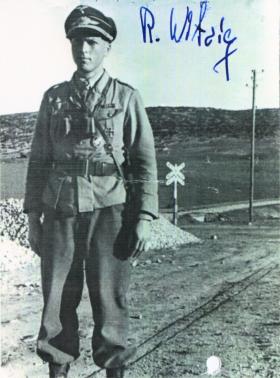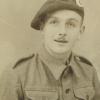Kef el Debna is a battle honour of The Parachute Regiment and took place between 27 and 29 March 1943 during Operation Torch in Tunisia. It is also known informally as the 2nd Battle of Tamera or the 2nd phase of the Battle of Tamera. The battle was the last major action of the 1st Parachute Brigade in the campaign.
The 1st Parachute Brigade was operating under command of 46 Division. In conjunction with 138 and 36 Infantry Brigades, it was tasked with an offensive operation to seize positions in the Tamera valley near Sedjenane (Sejenan), which would re-assert Allied control over a major section of the northern coastal road. This was familiar ground and had been previously held by the brigade during the first phase of the battle.
The brigade was supported by 70 Field Regt Royal Artillery and also had 1st Tabor under command. This was a unit of Moroccan Goumiers, who served as auxiliary troops in the French Army.
Personnel from 1st Para Sqn Royal Engineers were attached to the 1st and 2nd Para Bns to deal with booby traps. Sections from 16 Para Field Ambulance were also attached to the battalions to provide combat medical support.
The plan was to conduct the attack in three phases over 48 hours. 1st and 2nd Para Bns would pass round a position, known as Bowler Hat, held by the 3rd Para Bn and take objectives in each phase. The objectives in the final phase included a steep hill feature, Sidi Mohammed el Kassim, which was known to the Paras as Cork Wood.
1st and 2nd Para Bns had sustained a large number of casualties during the first phase of the battle and were significantly under strength.
The attack was launched at 23:00 hours on 27 March 1943. By the early hours of the following morning both battalions had secured their first objectives.
Around 10:00 hrs on 28 March, a determined counter-attack was launched against both 1st and 2nd Para Bns by troops from XI Corps Parachute Engineers Battalion (Witzig’s Paras).
A fierce two hour firefight ensued and the situation became critical for 2nd Para Bn as it suffered heavy casualties. A and C Coys from 3rd Para Bn were placed under command of 2nd Para Bn and provided vital reinforcements. Tenacious defence, in conjunction with effective artillery support, enabled 2nd Para Bn to defeat the German counter-attack.
By early evening 2nd Para Bn’s fighting strength was reduced to 175 men. Shortly before midnight the remnants of 2nd Para Bn were consolidated into a single composite company (No 1) with the two 3rd Para Bn companies temporarily redesignated as Nos 2 and 3 Coys.
Enemy opposition weakened following the failed counter-attack and 1st Para Bn secured its second phase objective by 21:30 hrs on 28 March. 2nd Para Bn pushed on to their next objectives over-night and had secured them before daylight.
The final objectives were secured on 29 March and the road opened to Allied transport by 18:00 hours with the support of the Royal Engineers.
The brigade captured nearly 800 German and Italians soldiers as prisoners of war during the battle.






Latest Comments
There are currently no comments for this content.
Add Comment
In order to add comments you must be registered with ParaData.
If you are currently a ParaData member please login.
If you are not currently a ParaData member but wish to get involved please register.